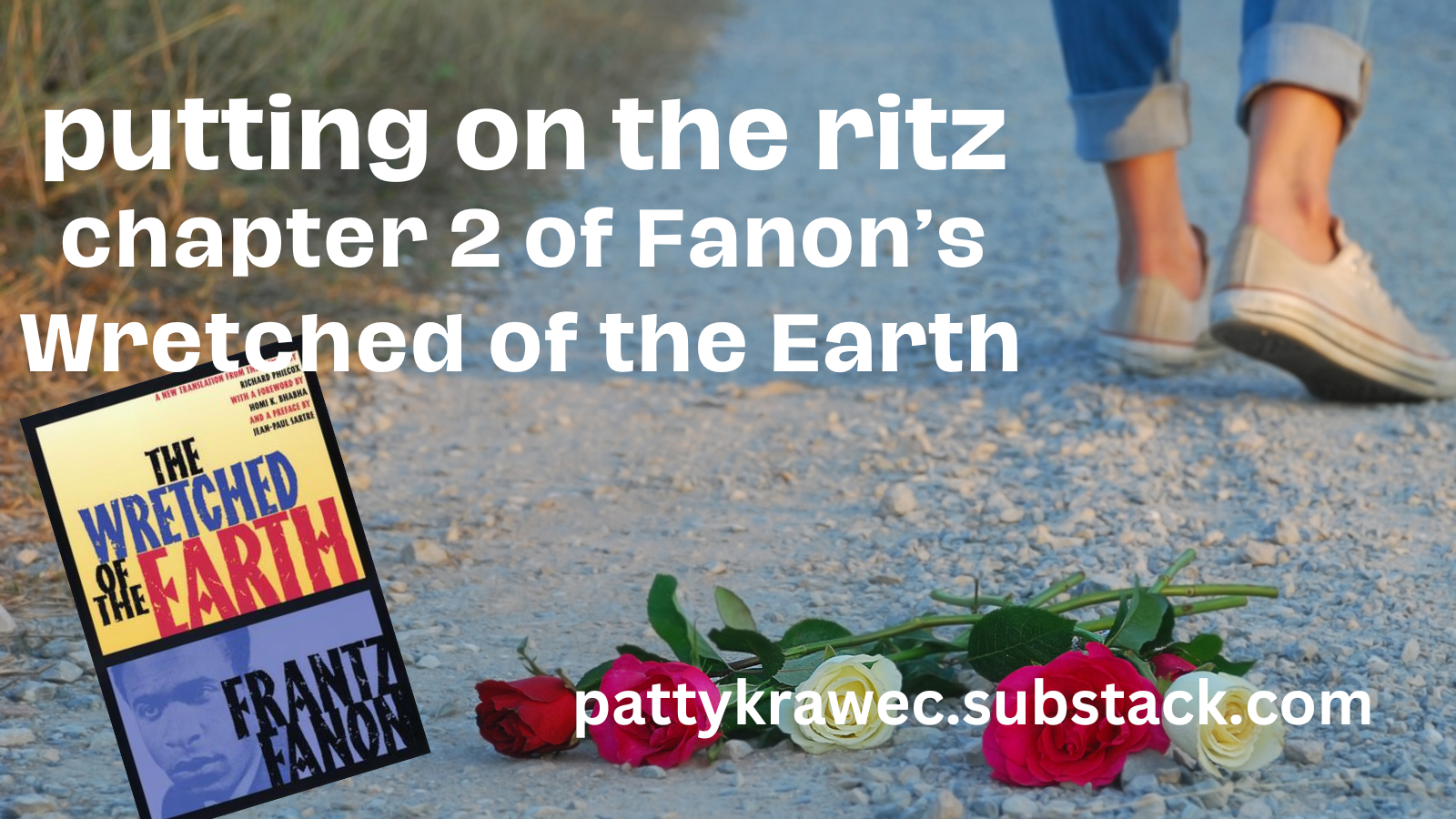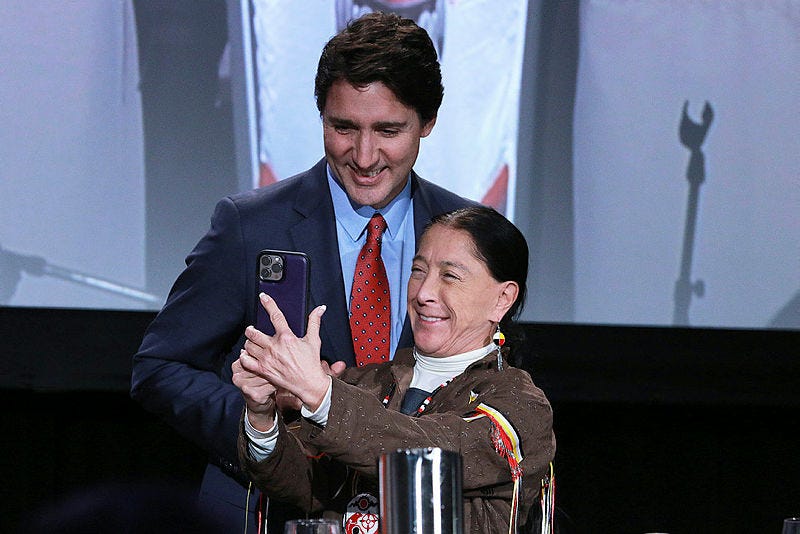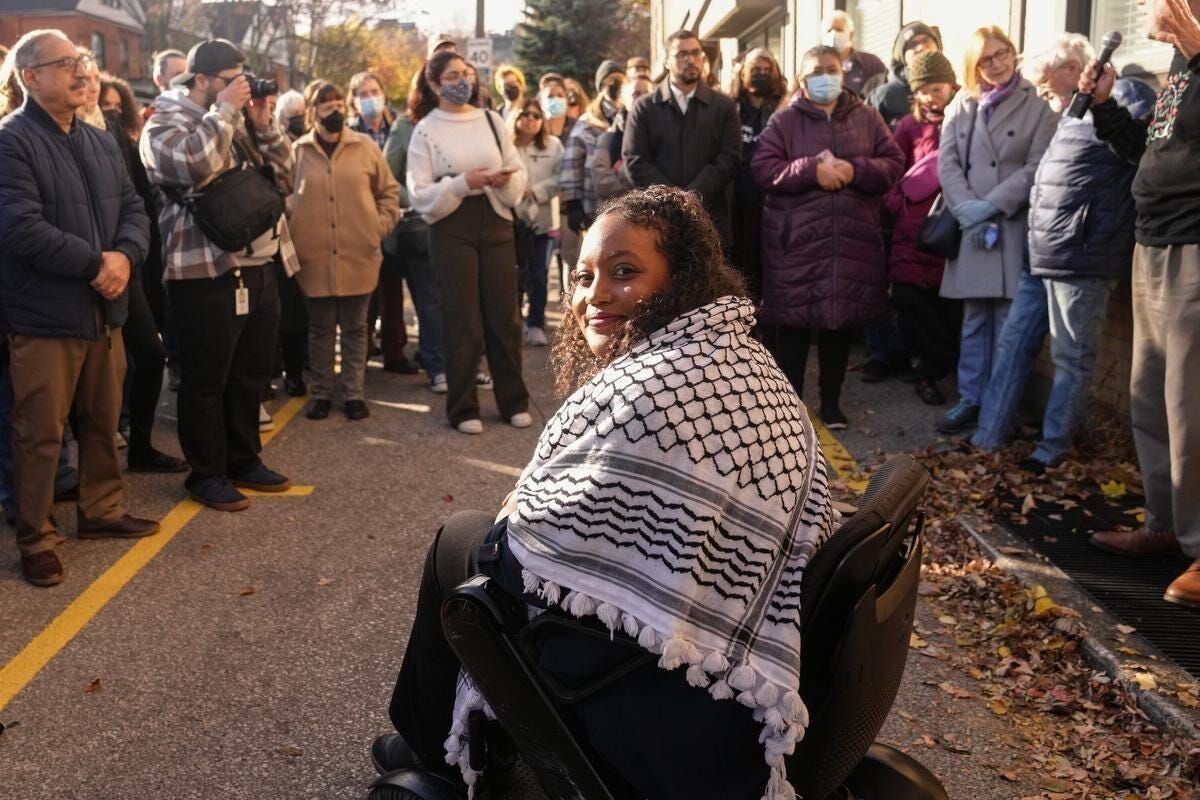Putting on the Ritz
Chapter two: Grandeur and Weakness of Spontaneity

In 2012 four women, three of whom are Indigenous and one settler, held a teach in at Station 20 West in Saskatoon that they called “Idle No More.” They were reacting to a piece of Canadian legislation, The Jobs and Growth Act (Bill C-45), that was ostensibly about jobs but was what was a new political strategy: the omnibus bill. These bills are massive pieces of legislation including provisions that have nothing to do with their stated intention. This particular bill, which was passed in December 2012, would ultimately weaken environmental protections and have a significant impact on land reserved for First Nations communities. The teach in became a movement that was primarily Canadian, but saw support and rallies across the world. The Kino-nda-niimi Collective pulled together a beautiful collection of poetry, art, and writing called The Winter We Danced. It’s a beautiful anthology with a wide range of contributors and the title captures the spirit of that first winter when rounddances exploded across the country, taking up space in shopping malls and intersections.
For two winters, taking the summer off for pow wow season, we danced everywhere we wanted to. We wore ribbon skirts and shirts, sang hand drum songs, joined hands with settlers and danced endless circles across Canada. Speakers talked about the harm that this pending, and then passed, legislation would have on First Nations peoples. I loved the larger imagery of the round dance, a simple dance in which participants hold hands and dance in a ring around drummers. It is an action that gathers in, the circle simply expands and doubles or triples so that everyone can participate. I drummed in the center of one such circle in Toronto at a solidarity rally for Standing Rock in November of 2016.
The other thing we did for two winters was listen to people from reserves talk about how this legislation would impact them. When did we stop listening to them?
I read Arthur Manuel’s book Unsettling Canada in that first or second winter. It’s a book about Canadian history and the struggle for Indigenous rights in our contemporary political system. Manuel is the father of Kanahus Manuel, an activist with the Tiny House Warriors, and the son of George Manuel who was president of the National Indian Brotherhood in the 1970s and that’s the first I learned about the Assembly of First Nations’ activist roots. I say that’s the first I learned about those roots because what I see today in the AFN couldn’t be further from those roots. The NIB was a national group drawing from various provincial and territorial organizations to lobby for changes from the federal government. They opposed the assimilationist 1969 White Paper, their work arguably contributed to the end of the Residential School System, and accomplished other things. Internal tensions began to emerge, not the least of which was the hierarchy that had been created. The NIB dissolved and the Assembly of First Nations was formed a few years later.
The AFN gets most of it’s funding from the federal government.
The occupier has already made his choice from the two or three nationalist parties who led the liberation struggle. The method of choice is typical: Once a party has achieved national unanimity and has emerged as the sole negotiator, the occupier begins his maneuvering and delays negotionations as long as possible. The delay is used to whittle away the party’s demands and obtain concessions from the leadership to remove certain “extremist” elements.
If, however, no single party emerges, the occupier is content to favor the one which seems to him to be the most “reasonable.”
~ Fanon, Wretched of the Earth, p 73
We see this happen all the time. Resistance groups or movements emerge and coalesce into national groups which get either co-opted by the government or they become the targets of various strategies to undermine them. This strategy of occupying governments to grant a kind of legitimacy to nationalist parties should be a cause for alarm, but instead they get smiles and selfies.

The AFN isn’t alone in falling into this trap, it’s just the example that occurred to me, an Ojibwe woman living in Canada. I’ve also been a union member and attended church and been part of a lot of groups where somebody’s suggestion to confront power is met with concern about how that would impact our relationship with those in authority. When I was in a union we were warned by other locals that installing a full time president would result in the president becoming aligned with management because most of their time would be spent dealing with labour management. We were sure that wouldn’t happen, but it did. Fanon articulates this well, writing about how what he calls cadres gauge the difficulties likely to be created by employers and put a restraint on demands for immediate, unconditional improvements. This isn’t the right time. We have other priorities. Let’s put a pin in that. Even in organizing circles, our relationship with the police or politicians begins to take priority over the issue itself. We get dazzled by our proximity to those in power and, flattered by their attention and pretty words we somehow come to believe that the people who both created and benefit from the current circumstances will somehow decide to work against their own interests to improve our lives.1
We have seen that the nationalist parties’ will to smash colonialism works hand in hand with the will to remain on good terms with the colonial authorities …. The leaders cloaked in their experience ruthlessly reject “these upstarts, these anarchists.”
~ Fanon, pp 76, 77

Indigenous people make up about 2% of the population in the US and about 5% of the population in Canada. As a voting bloc we don’t count for much more than photo ops to sanitize colonial violence. That is a significant difference between the experience of Indigenous people in what are currently the Americas and where Fanon is writing from. Fanon is writing from a place where most of the population is Indigenous, and that’s an important factor in considering how his words apply to us in this moment. He is also writing from a place where the rural spaces retain so much of their pre-colonial way of life or thinking. Positionality matters, you can’t just drag and drop theorizing from one place to another. But if you remember that, the principles do travel well.
In Canada and the US we don’t have that resource in the same way, although I wouldn’t discount it either. We may not have numbers, but we do have connections. The Inuit, for example, went from igloos to iPads in one generation. Their elders remember life before Canada, not that Canada didn’t exist but that the political and social impacts of Canada did not have significant impact on people’s day to day life until the Cold War required Canada to assert military presence in the far north. In northwestern Ontario, where my paternal family lives, colonialism didn’t land hard until the late 19th century when Canadian logging and paper industries needed water for hydro-electricity and access to forests. Indigenous peoples in BC also have tangible memory of pre-colonial life. Canada could draw its lines around us and tell the world that it had authority over all the land, but having authority over people takes more time.
The solution that Fanon offers is distressingly simple: get out of the metropole, the heart of empire, and listen to the people. And he isn’t talking about those tours of the hinterlands that politicians love so much. The one-off meet and greets followed by a tightly controlled meeting before jumping on another plane while their heads are already planning for the next conversation instead of listening. There’s a reason that Indigenous communities begin meetings with what seems like a long process of introduction. The Haudenosaunee begin with the words that come before all others. The Anishinaabe with a pipe ceremony. My own remarks when I give a 50 minute keynote are often 20 minutes of introduction. Western politicians, and those who have been trained by that system, are in such a hurry to get to the business at hand that they don’t take the time to truly pay attention to where they are and who they are talking to. They think that we’re all interchangeable, and we fall into that trap as well.
Now I know what you’re thinking. But 80% of Indigenous people live in cities! Cities are Indigenous land too! That’s true. Add to that, for some there is a complete lack of a path back to their community. Their urban community is the only one they’ve got and there’s a lot of very valid reasons that extend beyond the disconnections of residential schools and child welfare scoops. Many Afro Indigenous people have experienced outright rejection by their native communities making them doubly isolated. That’s something that our communities need to name and confront. Many Black people, who are Indigenous in their own right even if they are not Indigenous to here, also lack that path back. Saidiya Hartman has written about this loss in her memoir, Lose Your Mother: A Journey Along the Atlantic Slave Route.
So how do we balance that reality with Fanon’s recommendation to unsettle ourselves from the metropole and listen to those in rural spaces?
The nationalist militant who decides to put his fate in the hands of the peasant masses instead of playing hide-and-seek with the police in urban centers will never regret it … Constantly forced to remain on the move to elude the police, walking by night so as not to attract attention, they are able to travel the length and breadth of their country and get to know it … They realize at last that change does not mean reform, that change does not mean improvement
~ Fanon, pp 78,79
We don’t get comfortable in the metropole, in those places of power. Those places are not home. Fanon is talking about a constant movement to evade the police that takes people out of the cities and into the countryside where it is easier to avoid capture. He’s talking about a situation that is material in ways that it is not always material in our lives. Most of us aren’t hunted that way, but we are still at risk of being captured by systems that don’t want to change. I’ve written about Olúfẹ́mi O. Táíwò’s book Elite Capture twice now and I’m not going to do it again here except to say that what he’s on about with the way that our own leaders get drawn into colonial systems rather than opposing them is much like what Fanon is on about here. And the only way to resist it is to get out of the metropole.
Maybe you can’t leave the city, we aren’t living in Fanon’s Algeria, but how much time do you spend with people who aren’t centered around some form of power? How much time do you spend listening to the rural people, to those who have retained a connection to history that we in our constantly being reconstructed transitory urban spaces have lost. Urban spaces are Indigenous spaces too, but they are limited and that is important to remember. There isn’t anything more authentic about living on reserve, that’s just a form of purity testing that you know I have no patience for, but I will say that what was meant to isolate our communities helped them to preserve important knowledge about how to live lightly with the land and each other.
For myself this means making sure I get out to drumming on Wednesday nights. And not to lead it, to participate in it. It means prioritizing other circles where I am a participant, not a leader or teacher. Joining in actions and gatherings even if I don’t want to. As Mariame Kaba said during a panel I heard last fall, “we live in a society you assholes.” I’m going to close with Fanon’s own words and let you decide what that means for you. How you will carry the soil of your homeland between your toes.
In guerilla warfare, in face, you no longer fight on the spot but on the march. Every fighter carries the soil of the homeland to war between his bare toes. The national liberation army is not an army grappling with the enemy in a single, decisive battle, but travels village to village …
~ Fanon, p 85
I mean, the things that we are organize around like the loss of environmental protections for land and water that provoked Idle No More DO impact the population as a whole and you’ll often hear organizers making that connection, but capitalism has taught people to that everything can be thrown away and it won’t bother them anymore. In fact, as Max Liboiron argues in Pollution is Colonialism, capitalism requires disposability. Pollution is not, in Max’s words, a side effect. It is a manifestation of ongoing colonial relations to land. ↩
